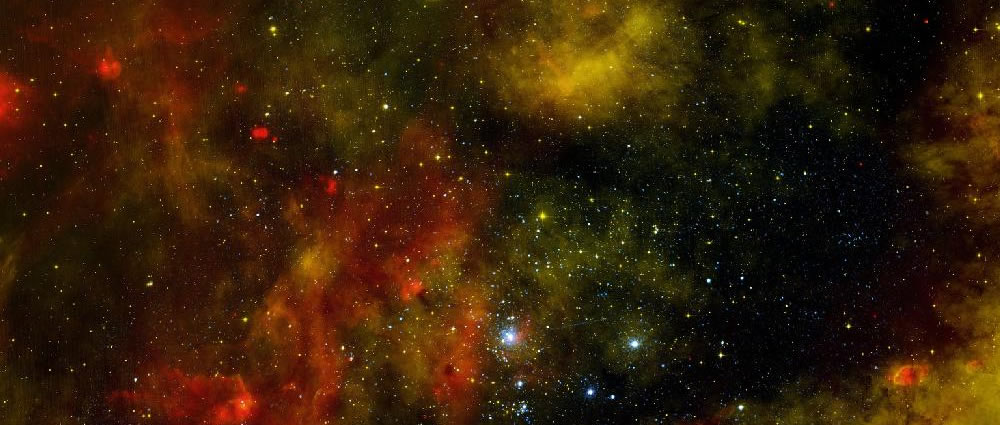-
Hashtag= #spacevision
Background
Intracranial pressure is known to cause visual impairment in astronauts on long duration flights. For some, this impairment is short-lived after a space flight, and for others it persists. The precise cause is currently unknown. Study of this syndrome is relatively new and interest among space medical professionals increasing.
NASA has made it a high priority to understand this syndrome and provide mitigation techniques to protect crewmembers from visual impairment.
While there are many possible factors that could contribute to intracranial hypertension associated with spaceflight, the relative contribution of these, as well as the processes by which eye damage occurs as a result of intracranial hypertension, are not fully understood.
The observed pathophysiological phenomena are extremely complex and it is likely that multiple factors contribute to their incidence, rather than one simple mechanism.
Challenge Description
This challenge is to create a visualization and/or model to help better understand intracranial pressure and its contributing factors. The solution should graphically represent the Visual Impairment/Intracranial Pressure (VIIP) data by creating a visualization color coded like a gene array. The visualization may help researchers better understand the complexity of causes of visual impairment from intracranial pressure .
Functional Specifications
- The solution should be able to pull data from an excel spreadsheet.
- The solution include a visual representation, not just a processed data file.
- The visualization should include the following factors: age, CO2 expression, meds, gender, BMI, etc.
- It should use color coding, a sequence diagram, or shading/toning, to show strength of signal.
- It should be developed to allow for the processing of additional similar data sets.
Datasets
-
Findings on astronaut vision loss
-
Visual impairment due to intracranial pressure
-
Risk of Spaceflight-Induced Intracranial Hypertension/Vision Alterations
http://humanresearchroadmap.nasa.gov/risks/?i=105Risk Statement
Given that the microgravity environment causes cephalad fluid shift in astronauts, there is a probability that astronauts will have intracranial hypertension (IHT) to some degree, and if left untreated, could lead to hyperopic vision shifts. -
Risk of Microgravity-Induced Visual Impairment/Intracranial Pressure (ICP)
http://humanresearchroadmap.nasa.gov/Evidence/reports/VIIP.pdfOver the last 40 years there have been reports of visual acuity impairments associated with
spaceflight through testing and anecdotal reports. Until recently, these changes were thought to
be transient, but a comparison of pre and postflight ocular measures have identified a potential
risk of permanent visual changes as a result of microgravity exposure. There are limited pre and
postflight measures to define the risk and even less in-flight data is available. These data show
that there is a subset of crewmembers that experience visual performance decrements, cottonwool spot formation, choroidal fold development, optic-disc edema, optic nerve sheath
distention, and/or posterior globe flattening with varying degrees of severity and permanence.
These changes define the visual impairment/intracranial pressure (VIIP) syndrome. It is thought
that the ocular structural and optic nerve changes are caused by events precipitated by the
cephalad-fluid shift crewmembers experience during long-duration spaceflight. It is believed that
some crewmembers are more susceptible to these changes due to genetic/anatomical
predisposition or lifestyle (fitness) related factors. Three important systems – ocular,
cardiovascular, and central nervous – will be evaluated to understand the risk of developing the
VIIP syndrome. Several hypotheses have been proposed to explain the identified visual acuity
and structural changes including increased intracranial pressure, localized ocular changes such as
ocular hypotony, decreased venous compliance, and alterations in cerebrospinal fluid dynamics.
As there are little data to determine the extent or cause of the VIIP syndrome, there is a
knowledge gap related to etiology of the changes and the postflight resolution. This lack of
knowledge gives the basis for increased pre, in-, and postflight monitoring to characterize the
risk. It will be very important to determine the risk of developing the VIIP syndrome and if there
is an increase in severity corresponding to mission duration for exploration class missions.
Although the leading hypothesis is that increased intracranial pressure underlies the observed
changes in affected crewmembers, due to the paucity of intracranial pressure measurements in
these crewmembers the term optic-disc edema will be used in this report, rather than the term
papilledema. -
Parameters of Interest (with clinical ranges)
http://data.spaceappschallenge.org/VIIPVariableInfo.xlsxParameters of Interest (with clinical ranges). Utilize these parameters as basic information for creating a visualization.
Create Project Solving this Challenge
Need help?
Check out the comments to chat with other users working on this challenge or email the challenge creator with any questions.
-
The following projects are solving this challenge:
-
Visual Enlightenment
Visualisation showed how different factors influent on human being in space. Visit Project
-
Brain Pressure and Your Eye
We came up with a far more wholesome solution to the problem that is currently faced by hundreds of thousands of people worldwide. We aimed to provide a visualisation tool for better understanding the different factors which affect intracranial pressure. The clinical data is initially presented i... Visit Project
-
In Flight Study To Decrease VIIP and IOP Using C.S.T. to Improve Vertebral and Carotid Drainage
In Flight treatment of VIIP and IOP using an earth based proven treatment to relieve constriction of the vertebral artery at the occipital area by SCM(sternocleidomastoid),Trapezius, and Sub-Capitus muscle attachments in the occipital area. Cerebral stimulation by electricity,laser, or sound of ... Visit Project
-
Satellite finder Pro
This Application (Android and Blackberry 7) offers you a very simple tool based on augmented reality in order to guide effectively your dish. How to use : What you need to do is to enable first the GPS, then launch the application and set your mobile at the top of your dish, you’ll notice the ... Visit Project
-
VIIP Reporter
Seeing in space -------------------- Intracranial pressure is known to cause visual impairment in astronauts on long duration flights. For some, this impairment is short-lived after a space flight, and for others it persists. The precise cause is currently unknown. Study of this syndrome is r... Visit Project
-

Seeing in Space
Loading...
×
Loading...
×